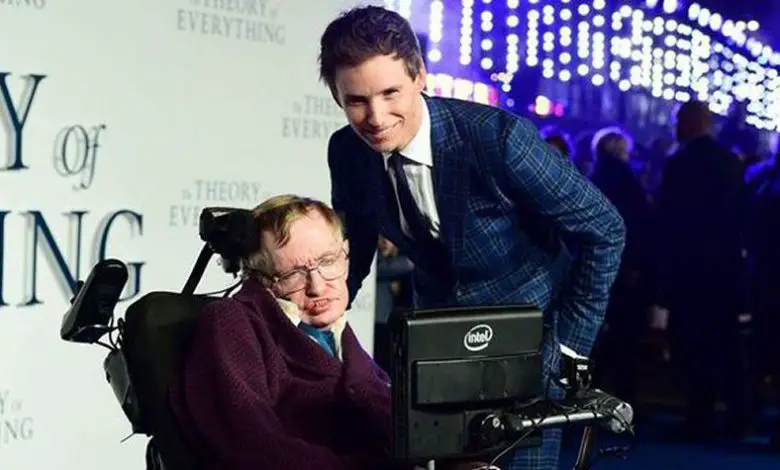
The Theory of Everything: a different theory of disability on the big screen
The Theory of Everything, a film that depicts the early life of well known Cambridge University student and physicist Stephen Hawking. A man who has defied the odds and broken new ground in the fields of medicine and science. Not only has Stephen himself made important advancements for disabled people, the film about his life is continuing in his footsteps. Raya AlJadir explores.
The film begins with Hawking in his best stride at university, with a prosperous future and promising relationship with new love Jane. But soon we begin to go into the world we are more familiar with as Hawking learns he has motor neuron disease (MND) – this is really where the film starts. He begins an ambitious study of the universe and time, of which he, according to his doctor, has very little left.
This is the basic plot of the film, but in actual fact, there is far more to it than just a narration of Hawking’s journey with MND. In my view, it is an exploration of living with disability at a later stage in life – being born with disability is very different to becoming disabled in adulthood.
Until The Theory Of Everything was released I had always believed that despite the few films that have dealt with the issue of disability or have had a disabled character, the best by far was My Left Foot. It was one of the first films that focused entirely on a disabled character, played by Daniel Day-Lewis.
When it was released I was merely a child, slowly discovering the world of disability, and so found many aspects of the film intriguing. Although I did not fully understand all the nuances at the time, it was clear from it that disability has its struggles and challenges, but with it also comes strength and determination.
But The Theory of Life is here to do the same as My Left Foot – to show what it’s really like being disabled to those who don’t really know. There are four scenes in the film that in my view demonstrated quite adequately the struggles of living with a disability. For example, not many will know the difficulties or even impossibility some people face in cutting their own food or feeding themselves. Even sitting with friends around a dinner table can be awkward as you and others notice how much of a struggle you are enduring at a task that is easily done by everyone else.
The other aspect of the film that I thought was sensitively dealt with is the challenge of being the sole carer to a person living with disability. Felicity Jones, who plays Hawking’s love Jane, manages to capture the two sides of being a carer – the sense of love and duty, but also the slight resentment and despair, both natural feelings that often don’t get the right recognition or reception by people.
You can almost feel Jane’s pain when she admits to Hawking that she needs help, something that is not easy for her to say. But her sense of duty towards her children pushes her to make that decision as she wants their son; “to be like a normal boy and they are not a normal family.”
I have read many articles praising the film for tackling the issue of sexual ability and I agree that this film managed to answer a question that I am sure is asked by many: how can a disabled person reproduce and have children? This was demonstrated through a lighthearted encounter between Hawking and his friend who asks him if his condition affects his sexual ability, to which Hawking informs him that this is one area, along with the brain, that does not get affected. A simple line in a simple scene, yet it dealt with such a fundamental issue that is often ignored or not discussed.
In addition, people with disability on screen rarely have affairs or leave their partners. I guess producers like to portray an angelic image of the disabled. But that’s not entirely realistic – we are human after all. Like everyone else, we make mistakes, so showing Hawking falling in love with someone else and leaving his wife is a great demonstration of not only free will but a human like portrayal.
My favourite part of the film is undoubtedly the end, when at a conference he is asked about his belief in God, or rather his disbelief. We see an image through Hawking’s mind of him getting up from his wheelchair and going down the steps to pick up a pen that has fallen on the ground. In my own interpretation it is almost like an answer that was never spoken – he could believe in God if he regained his strength and ability – he would need to see proof of God’s existence through the miracles that can be performed.
He then beautifully summarises his philosophy of life: “There should be no boundaries to human endeavour. We are all different. However bad life may seem, there is always something you can do, and succeed at. While there’s life, there is hope.” Hawking’s philosophy is one that we should all adopt, regardless of our physical ability.
By Raya AlJadir
Check out…
• Wings of freedom: skydiving with a disability
• Get fit for 2015: Q&A with disabled Zumba instructor
• 10 of the most wheelchair accessible beaches in the world
Get in touch by messaging us on Facebook, tweeting us @DHorizons, emailing us at editor@disabilityhorizons.com or leaving your comments below.